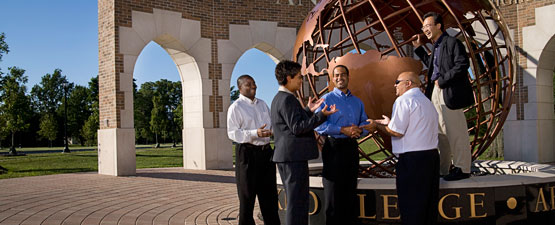Professional Dissertations DMin
Date of Award
1999
Document Type
Project Report
Degree Name
Doctor of Ministry
College
Seventh-day Adventist Theological Seminary
Program
Doctor of Ministry DMin
First Advisor
Nancy Vyhmeister
Second Advisor
Ricardo Norton
Third Advisor
Alfonso Valenzuela
Abstract
Problem
Most church districts in Brazil are comprised of many churches and companies. The average load of pastoral care is one pastor for seven congregations. In addition, members have high expectations their pastors and both lack a clear understanding of the role of lay ministry. Thus pastors feel a heavy work load.
Method
A survey of biblical insights, current literature, and other studies on the priesthood of all believers, lay ministry, and effective pastoral work was undertaken. A program designed to enhance pastoral work in multi-church districts in Brazil was developed.
Results
The concept of the priesthood of all believers is outlined in both OT and NT. Every Christian is called to ministry. Not only the paid clergy are responsible for the destiny of the church. The people of God as a whole are called to be involved in ministry. Since all Christians are priests the church needs to be open to multifaceted ministry where women and men work according to their gifts, talents, and abilities for the growth of Christ’s body. The doctrine of the priesthood of all believers and that of spiritual gifts walk hand in hand. On these two pillars the work of the district pastor is built. No program to enhance pastoral work could be developed without due attention to these biblical teaching. The responsibilities and roles of the district pastor are multiple. Yet, the two indispensable roles are those of spiritual leader and equipper. Effective pastoral ministry demands total involvement of the laity in the ministry of the church. To this end they need to be motivated and equipped to work in diversified ministries according to their gifts.
The program developed to mobilize laity into ministry consists of two parts. The first involves planning and consists of creating an appropriate climate, clarifying the mission of the specific church, redefining its concept of ministry, and preparing a statement of mission for the church. The second part of the program is the equipping phase. This is achieved through helping members identify and develop their gifts and applying the model of teaching of Jesus and Paul. This way of teaching emphasizes modeling, equipping and mentoring rather than lecturing.
Subject Area
Lay ministry--Brazil--Seventh-day Adventists
Recommended Citation
Nogueira, Paulo Cesar, "Equipping Laity for Ministry in Multi-Church Districts in Brazil" (1999). Professional Dissertations DMin. 711.
https://dx.doi.org/10.32597/dmin/711
https://digitalcommons.andrews.edu/dmin/711
Creative Commons License

This work is licensed under a Creative Commons Attribution-NonCommercial-No Derivative Works 4.0 International License.
DOI
https://dx.doi.org/10.32597/dmin/711
Files over 3MB may be slow to open. For best results, right-click and select "save as..."



